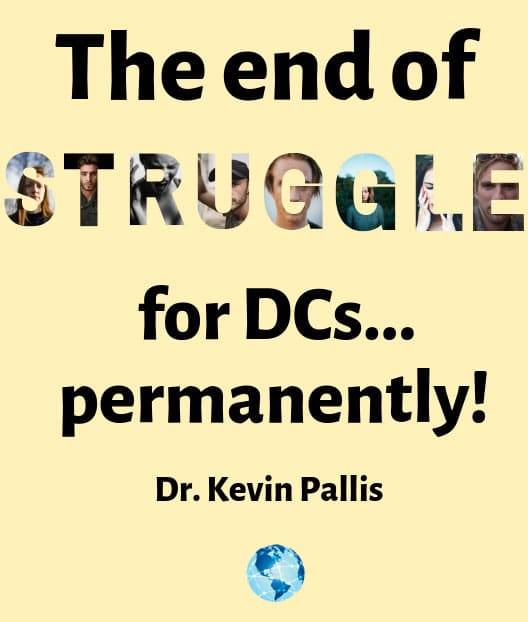How DCs Get Patients Beyond Pain Relief:
The door opens and nobody comes in for a full 3 seconds. Finally, a guy slowly shuffles into your office with a permanent grimace painted on his face. He is physically contorted into an S shape. He is in acute pain, can hardly move and he’s your next new patient. All he can talk about is symptomatic relief, his insurance policy covers only 8 visits, and he expects a one or a two-hit wonder.
Even though this is very basic for many of our readers, the same fundamentals apply to acute care as to any other new patient. Admit it, you feel sorry for this poor fellow. Many of us have been there. He’s writhing in agony, you can hear it in his breathing, and you witness firsthand that there is no sweat like that of pain. Everything in his world revolves around getting symptomatic relief as fast as he can. You, however, must remember that as the doctor you know what is best for him. What's best is not the symptom relief that he craves, rather it is restoring and maintaining his health.

He’s overweight, has moderate high blood pressure, and other health factors that will ultimately claim his life. You learn that he has a wife and two kids, and so you're shocked to see that he’s not interested in all of his other health issues right now…only his back pain!
Most DCs would simply get to work on the symptomatic picture and have him out of your office in a few visits. Truthfully, there’s nothing wrong with that, but it is just so limiting for the patient as well as the DC. You're not allowing either of you to reach your full potential!
Other more discerning DCs would do things differently. They care for all patients the same way, whether they are interested in becoming healthy or not. Even though health may not be on their radar, as a DC, you have a decision to make. Do you treat them for pain relief (what they want) and keep your mouth shut about being healthier (take the money and run), or do you attempt to actually communicate with them, educate them, and warn them of their potential health problems?
Now remember, the 2nd of these to options comes with a risk. If the patient is not ready to hear what you have to say, then they may reject anything other than pain relief. Is the risk of losing a low-quality patient greater than the possibility of gaining a high-quality NEW patient? Is this person in your office a vehicle to make a living or someone who is deserving of your best effort?
The truth is, it takes courage to do the right thing.
Some suggestions with acute pain:
- Care for the person, not a lower back problem at L4,L5. Attempt to make a real emotional connection.
- If you need to see them more than daily, do so, and charge them.
- Call them after the first visit to check in on them. Don’t answer lots of questions, just work to make them comfortable, say, "Things are headed in the right direction and hang in there.See you tomorrow!"
- Next step might be talking about prevention: AKA educate them on how this problem occurred, and what to do to limit the risk of it happening again. Coming in with a full blown attack can many times be prevented by ongoing care. We all know this to be true, but we cave when a patient is in acute pain.
If you think about your patients, you'll realize that some of your most loyal people came from circumstances like these


